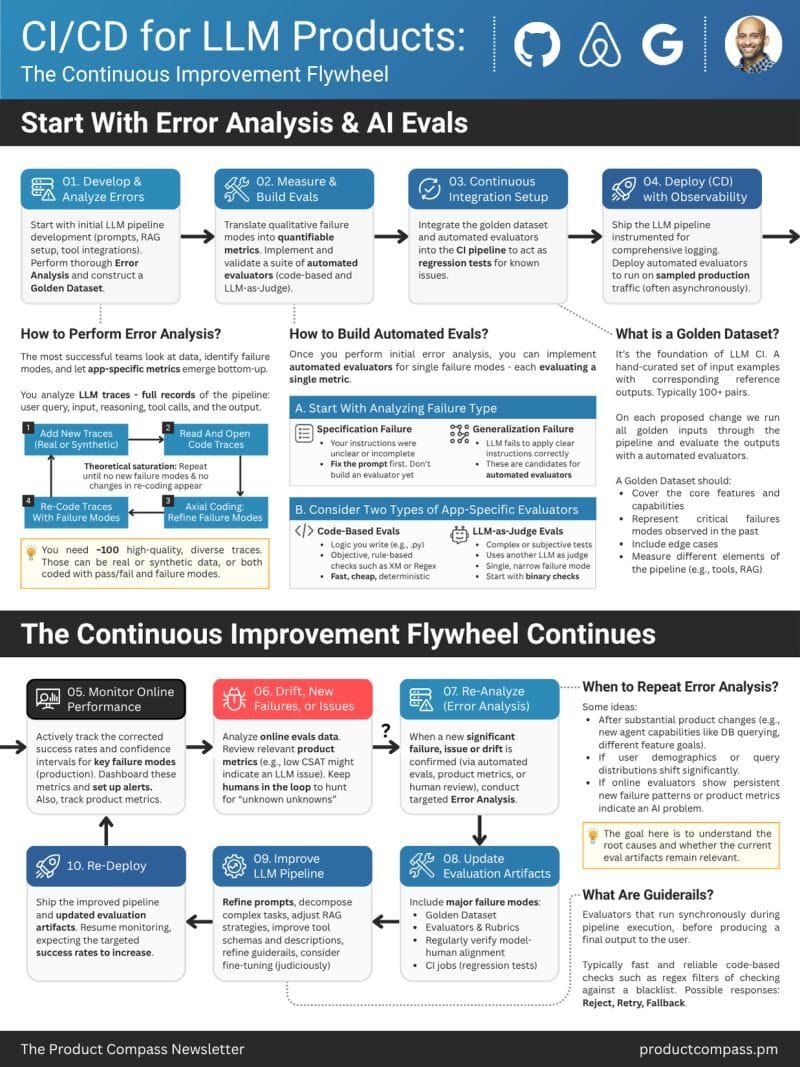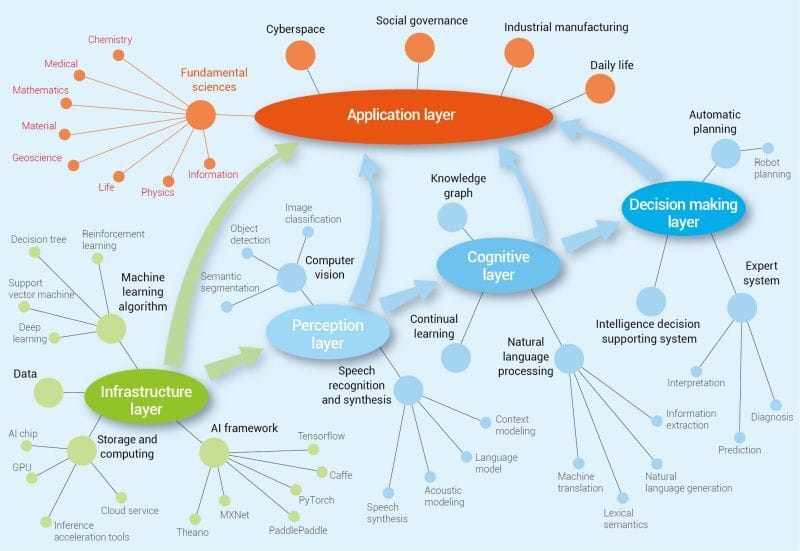8 bits for a Byte: I've been reflecting a lot lately on what it really means for organizations to work with AI—not just use it, but to build a true partnership. It's clear that the most successful implementations aren't about automation for its own sake, but about designing systems where humans and AI collaborate symbiotically—each amplifying the other’s strengths.
That’s the lens I brought to this issue. The articles I’ve curated aren’t just tactical tips or trend pieces—they represent a deeper shift. From navigating the messy search for truth in team dynamics to rethinking how we ideate and deliver with AI, each piece is a guidepost toward a more intentional, more human-centered AI strategy.
Because at the end of the day, this isn’t just about driving enterprise value—it’s about shaping a future where AI helps us do our most meaningful work, better.
In our latest AI Quick Bytes, we connect the dots between cutting-edge AI developments and core human strengths. Explore with us as John Cutler addresses the search for truth within team dynamics and how AI can serve as a pivotal ally. From strategic insights by Jan Beger to tactical approaches by Pawel Huryn, each bit is steeped in practical wisdom for harnessing AI's potential in business settings. Learn from Helen and Dave Edwards about the cognitive synergy possible with AI, and Brian Balfour's predictions on upcoming distribution paradigms. This is an indispensable read for leaders seeking to position their enterprises at the forefront of innovation and market relevance.

Create How-to Videos in Seconds with AI
Stop wasting time on repetitive explanations. Guidde’s AI creates stunning video guides in seconds—11x faster.
Turn boring docs into visual masterpieces
Save hours with AI-powered automation
Share or embed your guide anywhere
How it works: Click capture on the browser extension, and Guidde auto-generates step-by-step video guides with visuals, voiceover, and a call to action.

Let’s Get To It!

Welcome To AI Quick Bytes!
Bit 1: Sources Of Truth
John Cutler's insights into the ever-elusive 'source of truth' in organizational dynamics resonate deeply as we explore AI's integration into complex corporate fabrics. His perspectives underscore the necessity for nuanced strategies, emphasizing that our quest for AI-driven excellence must grapple with the intricate realities of truth in business environments.
Cutler's views on product development echo the challenges of AI integration, stressing the importance of respecting organizational complexities rather than oversimplifying them. In your AI strategies, prioritize systems capable of adapting to diverse data and scenarios, reflecting the many 'truths' within your operations. This adaptability ensures your AI efforts mirror real-world complexities, enhancing their utility.
Encourage utilizing AI not only for goal alignment but also for uncovering potential interplays between different objectives, a process I term ‘strategic divergence’. This approach might expose underlying synergies or conflicts, enriching strategic decision-making.
Be cautious of simplification in AI analytics. Configure AI tools to manage exceptions as effectively as routine cases, presenting a comprehensive view for decision-makers. Moreover, integrate AI into strategic discussions, empowering your teams through training and ongoing dialogues to leverage AI meaningfully in their workflows.
Action Byte:
Over the next 45 days, deploy an AI-driven scenario planning tool within your strategic planning department. Assess its effectiveness by its ability to produce varied strategic scenarios and engage different departments. Conduct quarterly workshops to discuss these scenarios, ensuring AI's central role in enhancing foresight and fostering inter-departmental collaboration.

Quote of the Week:
“All models are wrong, but some are useful.”


Bit 3: How We Think and Live with AI: Early Patterns of Human Adaptation
As we continue to explore the nuanced relationship between AI and human cognition, the insights from Helen and Dave Edwards provide a pivotal understanding of "Working with AI to Optimize Human Thinking and Innovation." Reflecting on our discussions, this next piece is crucial as it dives deeper into the psychological adaptations necessary for this evolution, something that's particularly relevant to your journey in reshaping your organizational culture around AI.
Now that we've seen how AI can blend seamlessly into daily workflows, let's consider the profound psychological shifts that can optimize human thinking and spur innovation within your teams. The Edwards' research describes a concept known as "Symbolic Plasticity," which involves forming new cognitive frameworks that can help your organization adapt more dynamically to AI integration.
By fostering an environment where AI is viewed not just as a tool but as a partner in cognitive processes, you encourage a mindset that is open to redefining problems and brainstorming solutions in ways that were previously unattainable. This requires nurturing a culture where learning from AI and adapting its insights becomes a natural extension of your team's capabilities.
Understanding and leveraging these psychological shifts can place your organization at the vanguard of AI adoption. It's about more than technical integration; it's about preparing your people to think differently, to blend their creativity with AI's capabilities, and to transform challenges into innovative solutions.
For practical steps, start by conducting workshops that focus on AI's role in enhancing decision-making and creative processes. Encourage your teams to experiment with AI, using it to explore new project ideas or optimize existing workflows, and then discuss these experiences openly. This not only demystifies AI but also integrates it into the fabric of your organizational thinking.
To delve deeper into these concepts, consider Helen and Dave Edwards' detailed analysis at Artificiality Institute. Their work can provide further clarity and empirical backing to the strategies we discuss here.
Action Byte: Initiate an "AI and Creativity" pilot program within your design and marketing teams. Over the next 90 days, let AI take part in brainstorming sessions and routine tasks, with specific metrics to gauge creativity and outcome quality—aim for a 20% increase in project outcomes and a 25% reduction in time-to-market. Weekly review sessions should be set up to reflect on the AI's input and its impact, adjusting strategies as needed. This practical approach will provide your teams with a hands-on understanding of AI’s potential, fostering both adaptation and innovation.

An AI scheduling assistant that lives up to the hype.
Skej is an AI scheduling assistant that works just like a human. You can CC Skej on any email, and watch it book all your meetings. Skej handles scheduling, rescheduling, and event reminders. Imagine life with a 24/7 assistant who responds so naturally, you’ll forget it’s AI.

Our journey through AI's impact highlights the importance of challenging assumptions and critically evaluating its applications. This exploration sheds light on a surprising aspect of AI—its potential to slow down processes in software development, an important counterpoint to our discussions on AI's capability enhancements.
This recent study reveals that while AI tools offer advanced capabilities, their integration isn't without challenges, sometimes even hindering productivity. This calls for a nuanced approach in implementing AI within software development, urging us to temper expectations and adapt strategies based on real-world experiences.
Begin with small-scale experiments to gauge how AI tools impact productivity, encouraging feedback to fine-tune their application. This approach not only ensures the tools are beneficial but also aligns them more closely with your organizational goals.
Action Byte:
Trial AI tools within a small developer group, contrasting their productivity against a control group over a 60-day period. Analyze project outcomes and team satisfaction, adjusting AI utilization based on these insights. Discuss these findings in a dedicated workshop, collaboratively refining your AI deployment strategy.
Acknowledge the insightful work by Joel Becker, Nate Rush, Elizabeth Barnes, and David Rein.
I suggest diving into their detailed study for a richer understanding of the data and methodologies.

Brian Balfour's session on "The Next Great Distribution Shift" provides crucial insights into how AI-driven changes might influence strategic decision-making within your organization. This perspective is critical as it hints at potential transformations in how products and services reach consumers.
Balfour's discussion prompts a proactive organizational approach to anticipate and adapt to changes catalyzed by AI. Embedding an anticipatory strategy could safeguard against potential disruptions, ensuring your business remains agile in a rapidly evolving market.
Investigate AI's potential to reshape not just market dynamics but also internal processes, conducting pilot projects to explore these new technologies' implications fully. This early adoption and subsequent strategic adaptation ensure your organization remains competitive as AI reshapes industry landscapes.
Action Byte:
Organize bi-annual AI-readiness workshops for your strategy and operations teams, starting within the next 60 days. These sessions should focus on understanding AI-driven distribution changes and crafting flexible responses. Utilize scenario planning to prepare for market shifts, developing a playbook of strategic responses to maintain agility in the face of new AI developments.


Bit 6: Sunday Funnies


As we delve deeper into our shared journey through AI's transformative landscape, the insights from Pawel Huryn on AI evaluation present an essential pivot point for us. Our previous discussions about integrating AI to optimize both human thinking and innovation have beautifully set the stage for this leap. Now, we turn our attention to a more systematic approach to AI deployment that not only enhances its function but also elevates its role within your organization. Here’s why this insight is pivotal.
Building on our discussions around AI's role in enhancing organizational capabilities, Huryn’s concept of the Continuous Improvement Flywheel introduces a structured, yet dynamic approach to AI evaluation—the kind that can revolutionize how AI interacts within your systems. This model encourages a shift from episodic updates to a more rhythmic, continuous enhancement of AI capabilities, aligning perfectly with the proactive culture we've been cultivating together.
Facing the unique challenges of LLMs—like their non-deterministic nature and the subjective quality of outputs—your team might feel overwhelmed. Here’s a comforting thought: these challenges are not insurmountable but require a shift towards more robust, iterative testing frameworks, much like the Golden Dataset and automated evaluators that Huryn discusses. By embedding these into your operations, you ensure that AI tools are not only effective but also resilient to shifts in data and user demands.
Adopting a Continuous Integration and Delivery (CI/CD) framework tailored for LLMs means you can safeguard against the degradation of service quality over time. Imagine deploying AI systems that not only perform consistently but also evolve with each cycle of feedback and improvement. That's a game-changer, isn't it?
The strategic integration of these processes forms an AI governance architecture that not only anticipates changes but adapts to them dynamically. Drawing parallels from our earlier conversations, think of this as developing a more agile, perceptive AI infrastructure that aligns with your continuous strategic adaptation efforts.
Strategic Insight: Utilizing the Continuous Improvement Flywheel helps in maintaining the robustness of AI systems amidst evolving challenges.
Market Impact: Early adopters of this systematic AI evaluation process can gain a significant competitive edge by demonstrating reliability and superior user experience.
Implementation Focus: Begin integrating CI/CD practices specifically designed for LLMs, focusing initially on high-impact areas of your business.
Action Byte:
Start by implementing the CI framework using Huryn’s guide with a focused trial in your customer engagement sector. Use a Golden Dataset that reflects the most common interaction scenarios and monitor the system's outputs with automated evaluators. Target a 20% improvement in issue resolution accuracy and aim for 30% reduction in customer complaints related to AI interactions within the first quarter. Regularly revisit and refine your evaluation artifacts bi-monthly to adapt to new insights and challenges, turning this continuous improvement loop into a cornerstone of your AI strategy.

Bit 8: Rise of agentic AI
As we deepen our journey into integrating cutting-edge AI within your strategic operations, this pivotal finding from the Capgemini Research Institute offers a compelling perspective on the role of agentic AI. Building on our previous conversations about leveraging AI for enhanced team creativity and decision-making, this report provides a critical next step for transforming these insights into actionable innovation.
Reflecting on our discussions about maximizing human potential with AI, this report underscores the practical application of AI agents in automating and enriching business processes. With potential economic benefits reaching up to $450 billion, the stakes for understanding and deploying these agents effectively are incredibly high.
The distinct capabilities of AI agents, as detailed in examples like Devin or Manus, offer a glimpse into a future where AI partners with humans to drive unprecedented efficiency and innovation. It's an enticing vision, but one that requires a strategic approach given the current low maturity levels in technology infrastructure which only few organizations have mastered.
This complexity is significant in your scenario where a strategic, phased adoption could mitigate risks and enhance outcomes. Start with departments or processes that are ripe for innovation but currently under-resourced or inefficient. Implementing AI agents in these areas can provide quick wins that build momentum and support for broader AI initiatives.
Moreover, addressing ethical and transparency concerns upfront can fortify trust in AI technologies across your stakeholders. Initiating comprehensive training programs and transparent communication about AI’s role and limitations will be essential.
Strategic Insight: AI agents can dramatically streamline and enhance business processes.
Market Impact: Early adopters of fully integrated AI agents will set industry benchmarks.
Implementation Focus: Focus on creating a robust back-end infrastructure to support AI agent integration.

Until next time, take it one bit at a time!
Rob
P.S. Thanks for making it to the end—because this is where the future reveals itself.
As we continue to peel back the layers of AI integration within your organization, this insightful representation of AI as a system offers a new perspective that beautifully ties into our ongoing conversation about blending AI with human capabilities. We've touched on several aspects of AI, and now it's crucial to understand how these components work together seamlessly to drive innovation and efficiency. Let's dive into this framework and explore how it can enrich your strategic vision.
Building on our discussions about enhancing human decision-making with AI, Jan Beger's illustration provides a clear, layered structure that helps us understand how AI interprets and interacts with the world. At the base, the infrastructure layer—comprising data, computing power, and learning frameworks—serves as the foundation. It's akin to setting the stage for any significant transformation in your organization, where the groundwork is vital for all subsequent innovations.
Moving up to the perception and cognitive layers, AI begins to interpret and understand inputs, not unlike how a new executive assimilates into your company's culture and information streams. Here, AI's ability to process and make sense of complex data parallels the strategic comprehension you want your leaders to develop. This understanding then supports effective decision-making—mirrored in the decision-making layer of the AI system.
What's intriguing about generative AI models, like GPT-4, is their capacity to streamline these once-distinct processes into a cohesive, integrated operation. This shift towards more integrated models can be likened to having a cross-functional team in your organization that can swiftly move from data analysis to strategic initiatives without siloed interruptions.
For your organization, this means a potential overhaul of how technology interfaces with decision-making processes. Encourage your teams to think of AI as a dynamic entity within business operations, capable of both informing and executing strategy.
Strategic Insight: Understanding AI's layered structure clarifies its role in complex business environments.
Market Impact: Leaders who adapt their business models to incorporate these AI systems may gain a competitive edge.
Implementation Focus: Integrate AI understanding into all levels of strategic planning and execution.
Action Byte: Begin by mapping your current technology stack against the AI layers identified by Jan Beger. Identify gaps and opportunities for deeper integration. For instance, initiate a project to enhance data infrastructure with the goal of supporting advanced AI capabilities—target a 20% increase in data processing efficiency within the next six months. Concurrently, run workshops to elevate your team's understanding of AI's cognitive and decision-making capacities and how they can be harnessed to drive business goals. Measure success through improved strategic outcomes and speed of implementation.
Join thousands of satisfied readers and get our expertly curated selection of top newsletters delivered to you. Subscribe now for free and never miss out on the best content across the web!







